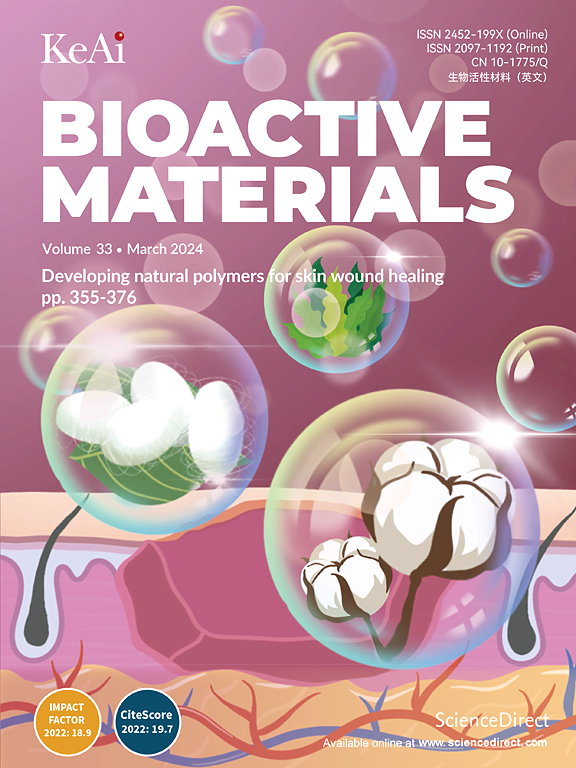Delivering LINE1 antisense oligonucleotides via endothelial targeting extracellular vesicles to ameliorate myocardial infarction-induced cardiac senescence
IF 18
1区 医学
Q1 ENGINEERING, BIOMEDICAL
引用次数: 0
Abstract
Transposable elements (TEs) constitute a significant portion of the nuclear genome, but their influence on and ability to manage their activity during tissue regeneration remain largely unknown. Here, we revealed that LINE1, the most abundant TE, responds to cardiomyocyte injury and is overexpressed in a myocardial infarction (MI) model. We developed selectin binding peptide (SBP)-engineered extracellular vesicles (EVs) with targeted functions, which are loaded with LINE1 antisense oligonucleotide (ASO). The engineered EVs display targeted accumulation in injured hearts and protect against myocardial senescence by inhibiting the cGAS-STING‐TBK1‐IRF3 pathway and suppressing the expression of senescence-associated secretory phenotype (SASP) factors. Our data revealed that LINE1 retrotransposon activation is triggered by cardiomyocyte injury in the MI model. We also propose a strategy to reduce cardiomyocyte senescence post-myocardial infarction by modulating LINE1 activity.
通过内皮靶向细胞外囊泡传递LINE1反义寡核苷酸改善心肌梗死诱导的心脏衰老
转座因子(te)构成了核基因组的重要部分,但它们在组织再生过程中对其活性的影响和管理能力在很大程度上仍然未知。在这里,我们发现LINE1是最丰富的TE,对心肌细胞损伤有反应,并在心肌梗死(MI)模型中过表达。我们开发了具有靶向功能的选择素结合肽(SBP)工程细胞外囊泡(ev),该囊泡装载了LINE1反义寡核苷酸(ASO)。工程化的ev在受损心脏中表现出靶向积累,并通过抑制cGAS-STING‐TBK1‐IRF3通路和抑制衰老相关分泌表型(SASP)因子的表达来防止心肌衰老。我们的数据显示,在心肌梗死模型中,LINE1反转录转座子激活是由心肌细胞损伤触发的。我们还提出了一种通过调节LINE1活性来减少心肌梗死后心肌细胞衰老的策略。
本文章由计算机程序翻译,如有差异,请以英文原文为准。
求助全文
约1分钟内获得全文
求助全文
来源期刊

Bioactive Materials
Biochemistry, Genetics and Molecular Biology-Biotechnology
CiteScore
28.00
自引率
6.30%
发文量
436
审稿时长
20 days
期刊介绍:
Bioactive Materials is a peer-reviewed research publication that focuses on advancements in bioactive materials. The journal accepts research papers, reviews, and rapid communications in the field of next-generation biomaterials that interact with cells, tissues, and organs in various living organisms.
The primary goal of Bioactive Materials is to promote the science and engineering of biomaterials that exhibit adaptiveness to the biological environment. These materials are specifically designed to stimulate or direct appropriate cell and tissue responses or regulate interactions with microorganisms.
The journal covers a wide range of bioactive materials, including those that are engineered or designed in terms of their physical form (e.g. particulate, fiber), topology (e.g. porosity, surface roughness), or dimensions (ranging from macro to nano-scales). Contributions are sought from the following categories of bioactive materials:
Bioactive metals and alloys
Bioactive inorganics: ceramics, glasses, and carbon-based materials
Bioactive polymers and gels
Bioactive materials derived from natural sources
Bioactive composites
These materials find applications in human and veterinary medicine, such as implants, tissue engineering scaffolds, cell/drug/gene carriers, as well as imaging and sensing devices.
 求助内容:
求助内容: 应助结果提醒方式:
应助结果提醒方式:


